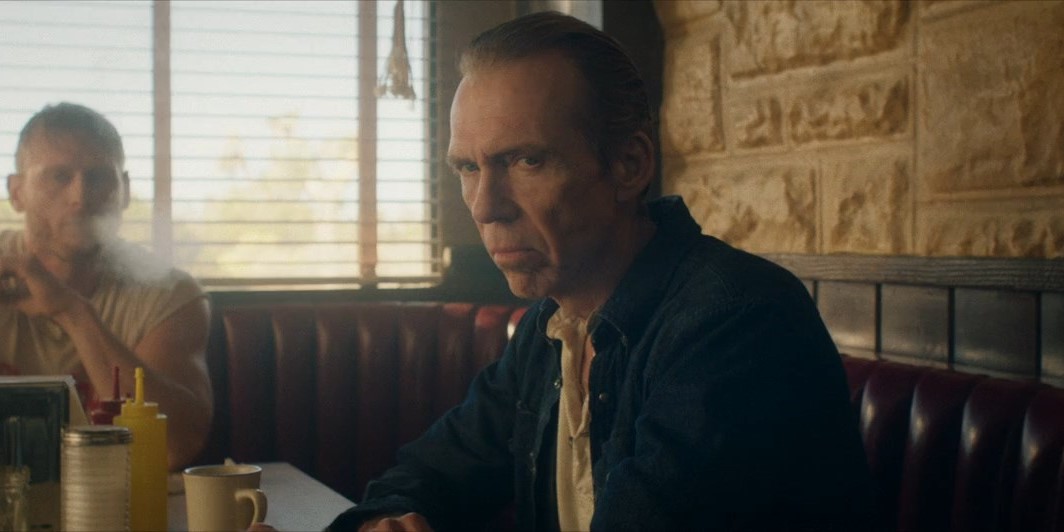Directed by Francis Galluppi, ‘The Last Stop in Yuma County’ transports us to a remote diner that becomes the center of a high-stakes standoff between locals, travelers, and bank robbers. A knife salesman is the first to stop at the diner as it is adjacent to the only gas station within 100 miles. However, the station is out of fuel, and the gas truck is late, making the salesman wait at the diner. A couple of bank robbers, Travis and Beau, enter the establishment, facing the same predicament. They threaten the salesman and the waitress, forcing them to keep quiet about their identities and return to business as usual until the truck arrives and they can be on their way.
However, matters are complicated as more customers enter the diner, mostly waiting for the fuel truck. Travis and Beau introduce themselves as brothers to a passing lawman. The elder brother, Beau, is vigilant and sharp, while Travis is not the smartest tool in the shed. The two take the waitress hostage when they spot an opportunity to escape, leading to a thrilling and unpredictable standoff. With the film seeming to be set in the 1970s, questions arise regarding the bank robbers Travis and Beau being based on any real-life counterparts.
Travis and Beau Play into the Neo-Noir Themes of The Last Stop in Yuma County
The bank-robbing characters of Travis and Beau are fictional creations of the writer-director, who uses them as contrasting elements to build up the neo-noir moral dilemma that defines the film’s climax. The director created the story based on the filming location available to him, which in this case was a diner backlot at Four Aces Movie Ranch. He wrote many of the characters, including Travis and Beau, with the respective actors who would portray them in mind. Richard Brake, who essays the cunning Beau, seems especially authentic. This may have something to do with the veteran actor being involved in the development of his own character.

“So one of the first people to read The Last Stop In Yuma County script was actually Richard Brake,” said Galluppi in an interview. “As soon as I was done, he read a really early draft of the script and we hopped on a call and talked about it. I mean, I had Richard in mind when I was writing his character. And so very, very early on, probably more than two years before we actually started shooting the thing, Rich, he gave me his word and he’s just been the best. He’s just the sweetest guy and he is so professional.”
When it came to creating a believable world for these characters to inhabit, the filmmaker fell back on a time without mobile phones and the internet, saying that such technology could take the fun out of films. The movie is not only set sometime in the 1970s but also takes inspiration from the noir filmmaking of that time period. Galluppi has talked about shaping the moral dilemma of the knife salesman as the core of his story, giving the narrative a neo-noir feel. An important element in creating this moral backdrop for the salesman was to contrast it with the definitive good of Charlotte on one side against the bad of Beau and Travis.
“In terms of the story, I love that whole 1970s era of filmmaking,” revealed Galluppi in the aforementioned interview. “So I think the movies and filmmakers that were in my head were like Sam Peckinpah and Don Siegel movies, and obviously Hitchcock. I think looking back, those were probably the movies I was thinking about the most. But in terms of the cast, yeah, I fucking love horror films. I love genre. So it was a dream, literally a dream come true to get this cast. I have been such a fan of Jocelyn Donahue and Alex and Barbara and Sierra.”
With the diner giving the feel of a dusty saloon which brings in weary travelers one at a time, the movie also has a distinctive Western air about it.
Read More: Where is Heart of the Hunter Filmed? Is it a True Story?


